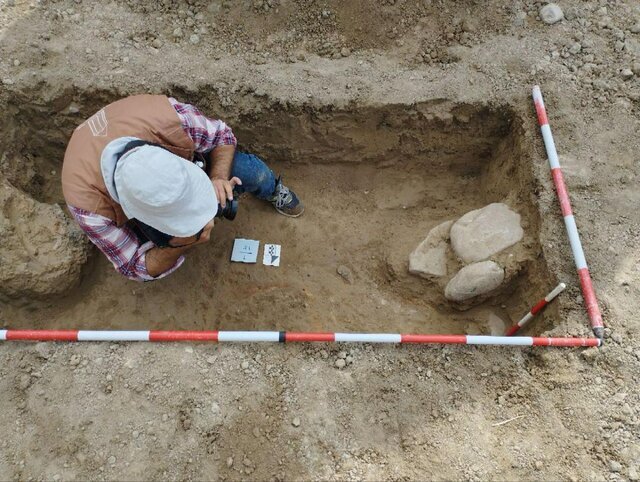Archaeological survey in northern Iran uncovers 4,000-year-old artifacts

TEHRAN - An archaeological survey aimed at defining the boundaries and proposing a protected zone for Tepe Kafshgiri, a historic hill in Gorgan county of Golestan province, has concluded under the supervision of the Research Institute of Cultural Heritage and Tourism.
Seyyed Meqdad Mousavi, head of the archaeological team, has announced the discovery of significant artifacts from the Middle and Late Bronze Age, dating back approximately 4,000 years, CHTN reported on Sunday.
Among the finds were remnants of pottery kilns, ovens, architectural structures, and cultural objects such as pottery shards and stone tools, offering valuable insights into the ancient cultural landscape of the Gorgan region.
Tepe Kafshgiri was registered on Iran’s National Heritage List in 2004 under the number 11284. Mousavi explained that the encroachment of the modern village of Kafshgiri, along with ongoing construction and land-use requests from local residents, necessitated the survey to establish legal boundaries and safeguard the archaeological site.
“The objective of the project is to ensure that proper legal measures are in place to protect this heritage site, in collaboration with the Ministry of Cultural Heritage, Tourism, and Handicrafts,” Mousavi added.
Tepe Kafshgiri was initially identified in 1932 by Swedish archaeologist T.J. Arne, and later mapped during the 1980s by a Japanese archaeologist as part of the archaeological surveys of Gorgan.
When it comes to archaeology, Gorgan is well famed for being home to an ancient defensive barrier named (“The Great Wall of Gorgan”) which stretched some 200 km in length and was built to prevent the invasion of the northern tribes.
AM
Leave a Comment